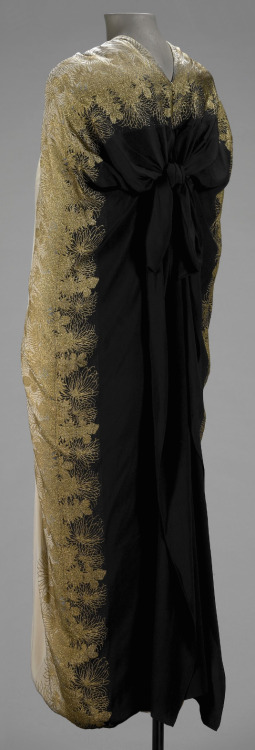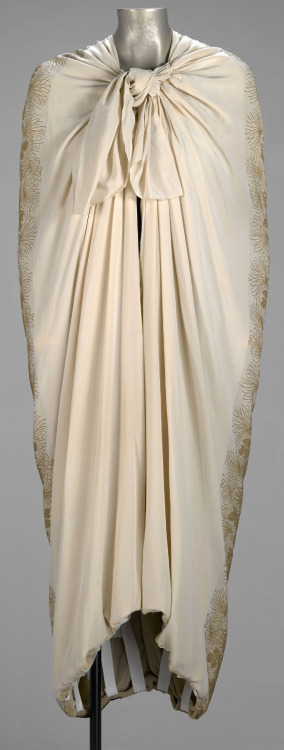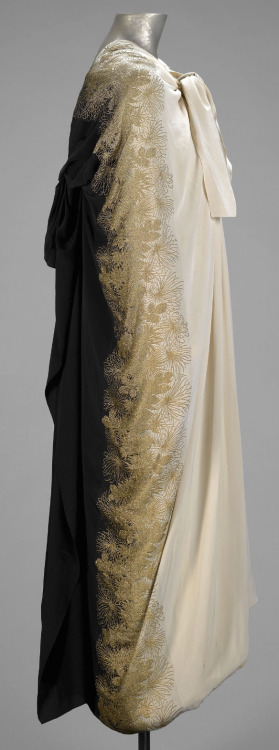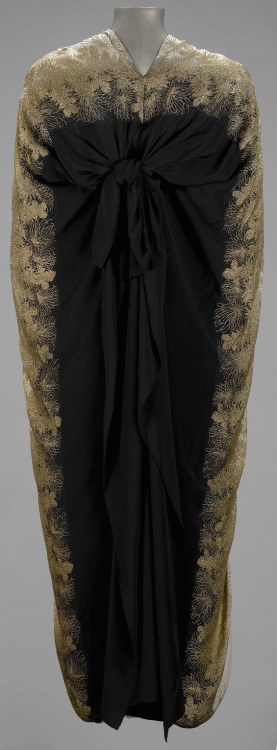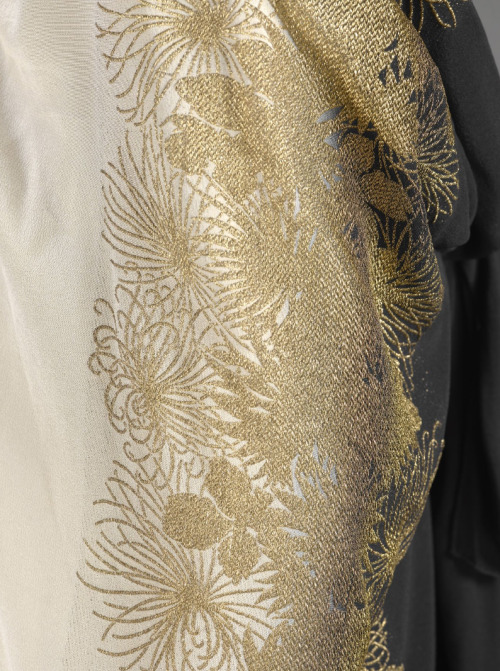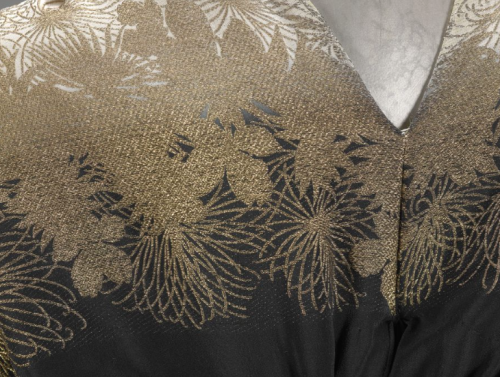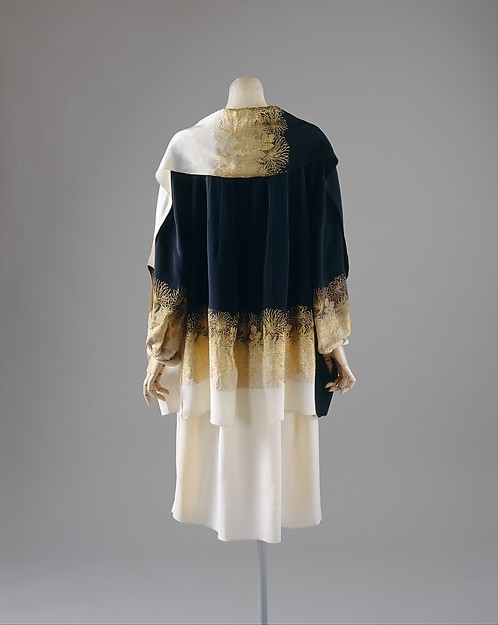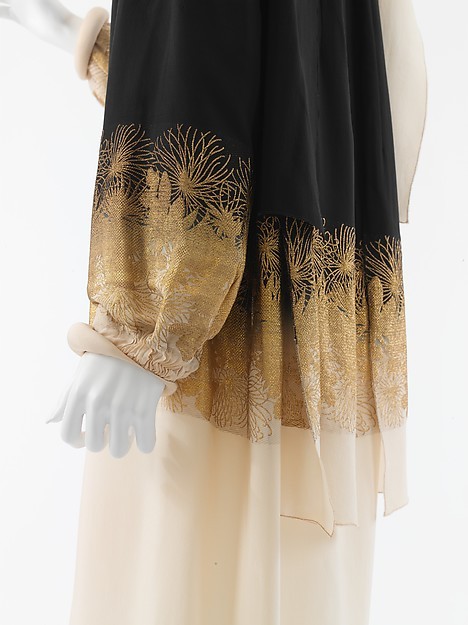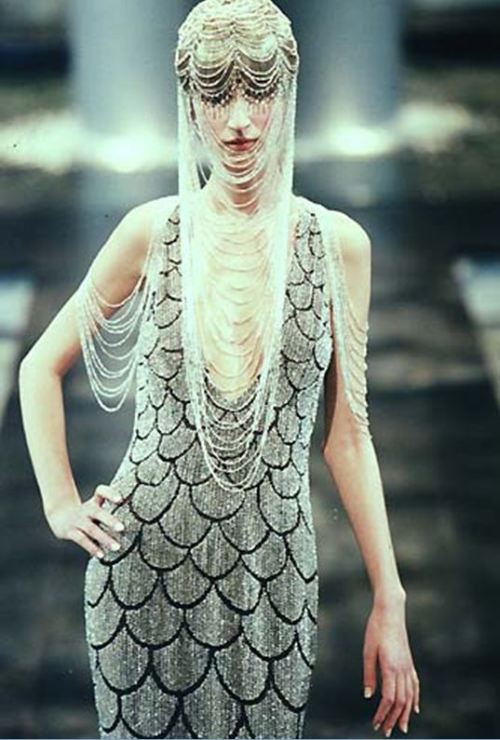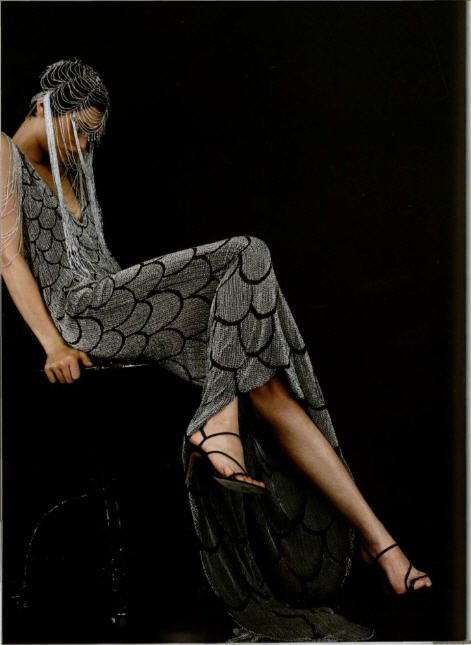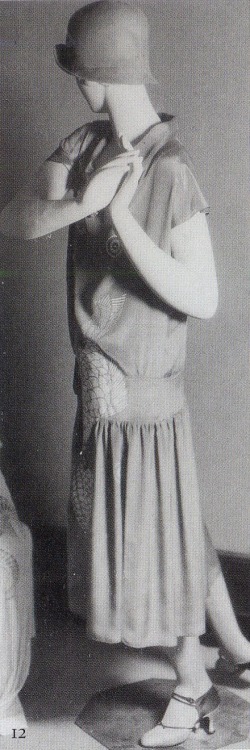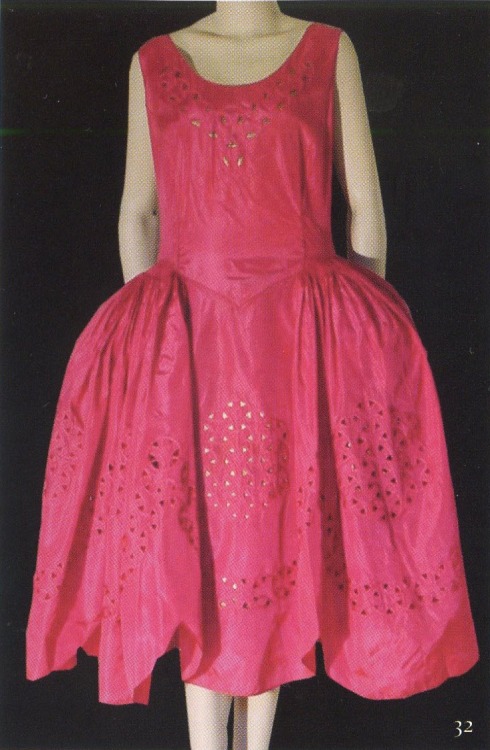#japanese motif
Evening Cape
Gabrielle ‘Coco’ Chanel
House of Chanel
1927
This evening cape is constructed of two 45-inch-wide lengths of silk crepe sewn together vertically and then ingeniously gathered and knotted to form a cape. The color of the silk crepe changes from black to cream, with metallic brocade covering the transition area. The influence of Japanese art is evident in the construction and drape of the cape and the use of the chrysanthemum motif. Chanel combined Art Deco aesthetics along with East Asian forms and techniques to create a critically modernistic look.
Post link
Coat
House of Chanel
Gabrielle ‘Coco’ Chanel
1927
The convergence of Art Deco line, the modernist impulse to facilitate pure form, and Japonisme’s potential to offer a vocabulary of untailored wrapping shapes was more than fortuitous. Chanel uses a French ombré textile with pattern sources from the Japanese kimono but brings to it the ethos of chaste minimalism. As Western fashion designers discovered from the East that untailored lengths of fabric could constitute modern dress, the cylinder and the textile plane became the new forms for apparel.
(Last two image’s source 1|2)
Post link
Evening Coat
House of Chanel
Gabrielle ‘Coco’ Chanel
1927
Silk jacquard patterned with black and green graduation and gold chrysanthemum motif; matching tie-collar; two panels at back; wadded sleeve hems.
The chrysanthemum had often appeared as a fashionable motif sine the latter half of the nineteenth century. The textile with woven chrysanthemums in Japanese makie-like (gold lacquer) style represents the taste of Art Deco. The soft wadded cuffs are similar to the kimono’s fuki (wadded hem) in style.
Images and text taken from the book:
Fashion: A History from the 18th to the 20th Century, Kyoto Costume Institute, pgs 448-449.
Post link
Sirene Gown
Haute Couture
Givenchy
Alexander McQueen
1998
“McQueen’s silvery mermaid dress has the kind of glamour appeal a screen goddess lives for. Silver beaded dress on black crepe georgette.”
Bazaar US April 1998, Perchance To Dream
This gown is similar to a 1919 evening dress by Gustave Beer.
Post link
Dinner Dress
House of Worth
Charles Frederick Worth
Jean-Philippe Worth
1890-95
At his shop, Worth fashioned completed creations which he then showed to clients on live models. Clients could then order their favorites according to their own specifications. This method is the origin of haute couture. Worth designed gowns which were works of art that implemented a perfect play of colors and textures created by meticulously chosen textiles and trims. The sheer volume of the textiles he employed on each dress is testimony to his respect and support of the textile industry. Worth’s creative output maintained its standard and popularity throughout his life. The business continued under the direction of his sons, grandsons and great-grandsons through the first half of the twentieth century.
(Silk Dress with morning glory motif.)
Post link
“Merveille de la Mer”
Dress
Jeanne Lanvin
1925
Sporty red silk crepe drop-waist dress embroidered with a pair of fish positioned mouth to mouth. “Merveille de la Mer” was designed for the Exposition of 1925.
Images and text taken from: Lanvin - Dean L. Merceron, pg 154.
(I came across these old scans, will re-do when I get hold of the book again.)
Post link
“Marquise”
Robe de Style
Jeanne Lanvin
1925 (Approx)
“Marquise” robe de style of cyclamen coloured silk taffeta with built-in pannier structure.
Medallions-formed by open-worked compositions derived from Japanese mon-encircle the skirt as well as forming a linear border just above the hemline. Because the mon structure is created with voids, the metallic gold lame underdress shows through revealing a hint of glimmer where beading used to be employed for the same effect.
Images and text taken from: Lanvin - Dean L. Merceron, pg 98
(I came across these old scans, will re-do when I get hold of the book again.)
Post link

